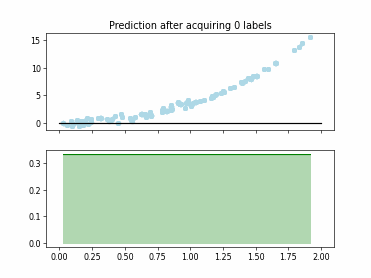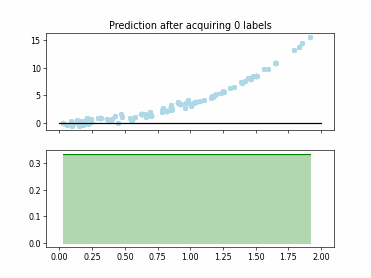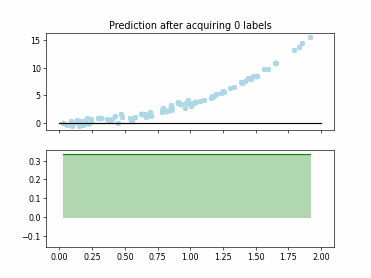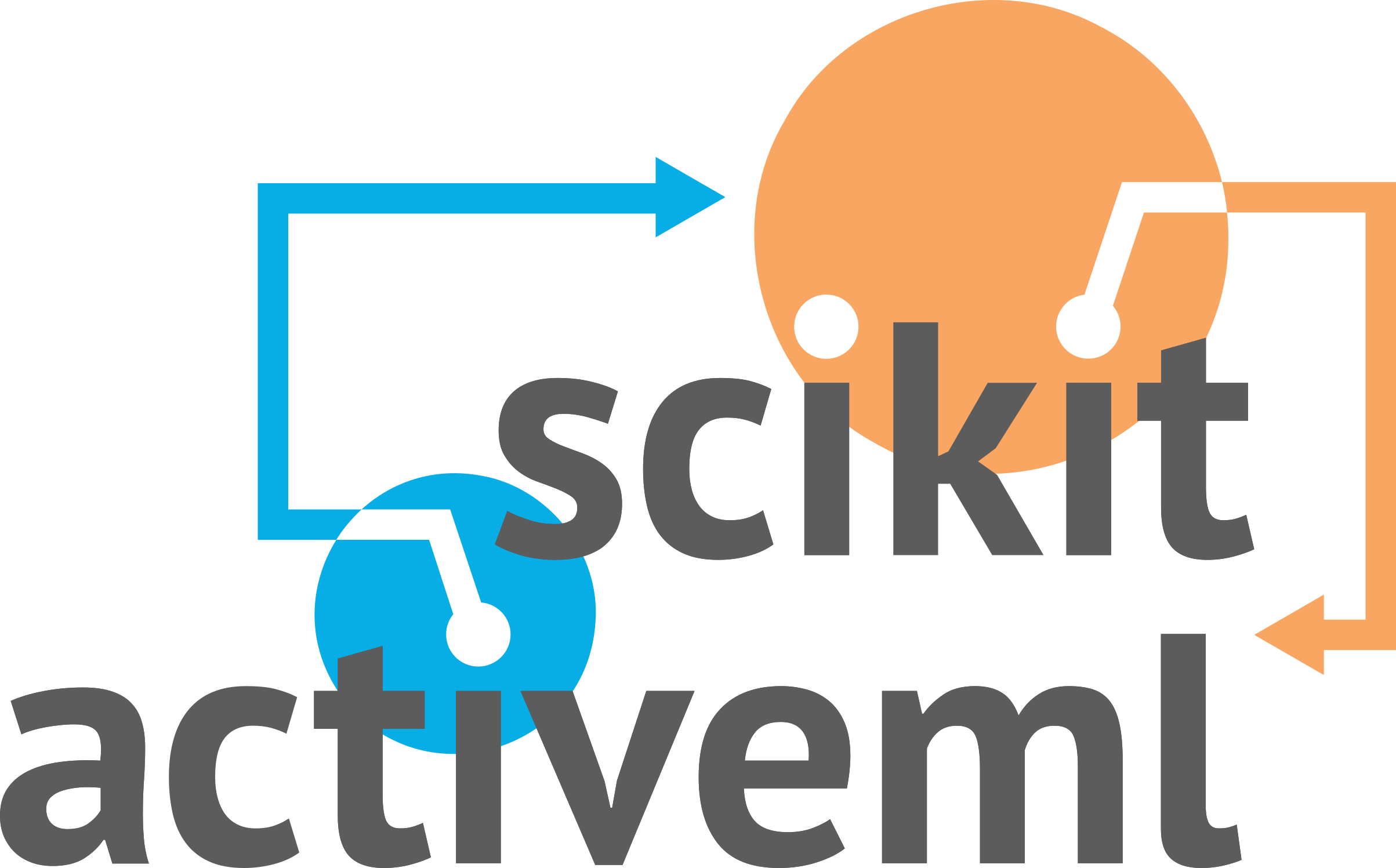RegressionTreeBasedAL#
- class skactiveml.pool.RegressionTreeBasedAL(method='random', missing_label=nan, random_state=None, max_iter_representativity=5)[source]#
Bases:
SingleAnnotatorPoolQueryStrategyRegression Tree-based Active Learning (RT-AL)
This class implements the query strategy Regression Tree-based Active Learning (RT-AL) [1], which is based on a regression tree and selects the number n_k of samples to be selected from each leaf k given a certain batch size. It than uses one of the three methods ‘random’, ‘diversity’, or ‘representativity’ to select n_k samples from each leaf k.
- Parameters:
- methodstr, default=’random’
Possible values are ‘random’, ‘diversity’, and ‘representativity’.
- missing_labelscalar or string or np.nan or None,
- default=skactiveml.utils.MISSING_LABEL
Value to represent a missing label.
- random_stateint or np.random.RandomState, default=None
The random state to use.
- max_iter_representativityint, default=5
Maximum number of optimisation iterations. Only used if method=’representativity’.
References
[1]A. Jose, J. P. A. de Mendonça, E. Devijver, N. Jakse, V. Monbet, and R. Poloni. Regression Tree-based Active Learning. Data Min. Knowl. Discov., pages 420–460, 2023.
Methods
Get metadata routing of this object.
get_params([deep])Get parameters for this estimator.
query(X, y, reg[, fit_reg, sample_weight, ...])Determines for which candidate samples labels are to be queried.
set_params(**params)Set the parameters of this estimator.
- get_metadata_routing()#
Get metadata routing of this object.
Please check User Guide on how the routing mechanism works.
- Returns:
- routingMetadataRequest
A
MetadataRequestencapsulating routing information.
- get_params(deep=True)#
Get parameters for this estimator.
- Parameters:
- deepbool, default=True
If True, will return the parameters for this estimator and contained subobjects that are estimators.
- Returns:
- paramsdict
Parameter names mapped to their values.
- query(X, y, reg, fit_reg=True, sample_weight=None, candidates=None, batch_size=1, return_utilities=False)[source]#
Determines for which candidate samples labels are to be queried.
- Parameters:
- Xarray-like of shape (n_samples, n_features)
Training data set, usually complete, i.e., including the labeled and unlabeled samples.
- yarray-like of shape (n_samples,)
Labels of the training data set (possibly including unlabeled ones indicated by self.MISSING_LABEL).
- regSkactivemlRegressor
The regressor must be sklearn.tree.DecisionTreeRegressor to predict the data. Ensure that the number of samples in the leaf is greater than 1. For example, by setting min_samples_leaf >= 2 or by restricting the tree’s depth.
- fit_regbool, default=True
Defines whether the regressor should be fitted on X, y, and sample_weight.
- sample_weightarray-like of shape (n_samples), default=None
Weights of training samples in X.
- candidatesNone or array-like of shape (n_candidates), dtype=int or array-like of shape (n_candidates, n_features), default=None
If candidates is None, the unlabeled samples from (X,y) are considered as candidates.
If candidates is of shape (n_candidates,) and of type int, candidates is considered as the indices of the samples in (X,y).
If candidates is of shape (n_candidates, …), the candidate samples are directly given in candidates (not necessarily contained in X). This is not supported by all query strategies.
- batch_sizeint, default=1
The number of samples to be selected in one AL cycle. Originally, this query strategy is developed for batch_sizes > 1.
- return_utilitiesbool, default=False
If true, also return the utilities based on the query strategy.
- Returns:
- query_indicesnumpy.ndarray of shape (batch_size,)
The query indices indicate for which candidate sample a label is to be queried, e.g., query_indices[0] indicates the first selected sample.
If candidates is None or of shape (n_candidates,), the indexing refers to the samples in X.
If candidates is of shape (n_candidates, n_features), the indexing refers to the samples in candidates.
- utilitiesnumpy.ndarray of shape (batch_size, n_samples) or numpy.ndarray of shape (batch_size, n_candidates)
The utilities of samples after each selected sample of the batch, e.g., utilities[0] indicates the utilities used for selecting the first sample (with index query_indices[0]) of the batch. Utilities for labeled samples will be set to np.nan.
If candidates is None or of shape (n_candidates,), the indexing refers to the samples in X.
If candidates is of shape (n_candidates, n_features), the indexing refers to the samples in candidates.
- set_params(**params)#
Set the parameters of this estimator.
The method works on simple estimators as well as on nested objects (such as
Pipeline). The latter have parameters of the form<component>__<parameter>so that it’s possible to update each component of a nested object.- Parameters:
- **paramsdict
Estimator parameters.
- Returns:
- selfestimator instance
Estimator instance.
Examples using skactiveml.pool.RegressionTreeBasedAL#

Regression Tree Based Active Learning (RT-AL) with Diversity Selection

Regression Tree Based Active Learning (RT-AL) with Random Selection

Regression Tree Based Active Learning (RT-AL) with Representativity Selection
